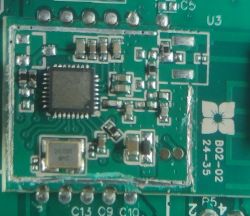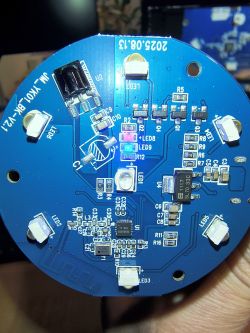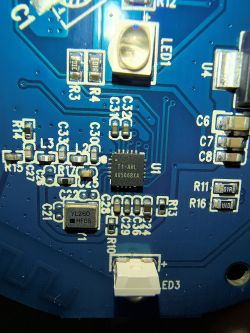FAQ
TL;DR: 3 / 3 forum users eventually achieved a successful flash after switching tools—“works without any problems” [Elektroda, 20802538; 20950671]. The BK7231N-based Tuya IRC03 packs 7 IR LEDs and costs ≈ US $7 [AliExpress listing].
Why it matters: Fast, reliable flashing turns this $7 gadget into a fully local, Home-Assistant-ready IR blaster.
Quick Facts
• MCU: BK7231N, 32-bit @ 120 MHz [Datasheet].
• IR emitters: 7 × 940 nm LEDs, ≈ 270° coverage [Elektroda, 20802538].
• Supply: USB-C 5 V / 0.5 A (typical 110 mA idle) [AliExpress listing].
• Flash size: 2 MB; OpenBeken image ≈ 460 kB [OpenBeken release].
• Street price: US $5–9, shipped [AliExpress listing].
1. What hardware is inside the Tuya IRC03 smart IR remote?
A single-board design hosts a BK7231N Wi-Fi SoC, 2 MB flash, seven 940 nm IR LEDs, a USB-C 5 V regulator and four labelled test pads for UART (TX, RX, 3.3 V, GND) [Elektroda, 20802538].
2. Which test pads do I use for flashing?
Back-side pads: TP5 = 3.3 V, TP6 = GND, TP3 = RXD, TP4 = TXD, TP2 = RST (connect to GND to reboot). No dedicated CEN pin is routed [Elektroda, 20948893; 21595371].
3. How do I flash OpenBeken when Easy UART fails?
Use the hid_download_py script.
- Connect 3.3 V, GND, TX, RX and keep RST low for 1 s.
- Run
python uartprogram firmware.bin -d /dev/ttyUSB0 -s 0x0 -u -w.
- Cycle power; web UI appears at 192.168.4.1 [Elektroda, 20950671].
4. Why doesn’t powering through USB-C work during flashing?
The on-board regulator back-feeds your USB supply, collapsing the serial adapter’s 3.3 V rail and dropping UART. Power only from the adapter or cut the USB-C 5 V line [Elektroda, 20948893].
5. Can I restore the original Tuya firmware without a backup?
Only if someone shares an identical dump. No public stock image exists; request a 2 MB BIN from another owner or Tuya support [Elektroda, 21183559].
6. Does OpenBeken send raw IR codes?
Yes. Issue IR_SendRAW <timing_list> where timing values are microseconds. Capture unknown remotes with IR_RecvRAW first [OpenBeken Wiki].
7. How do I add the IRC03 to Home Assistant?
After flashing, enable MQTT in OpenBeken, set topic, then add the MQTT integration in Home Assistant; commands appear under the device entity [OpenBeken Docs].
8. Can the board drive WS2812 or SM16703P LEDs?
Yes, but you must solder to P16 (pin 12). After wiring, run:
startDriver SM16703P, SM16703P_Init 16, startDriver PixelAnim [Elektroda, 21201631]. Soldering directly to the 0.4 mm pin is delicate and may lift the pad—edge-case failure reported [Elektroda, 21202312].
9. What causes the voltage regulator to overheat?
A momentary short or reverse current from the USB-C line into the 3.3 V rail can drive the SOT-223 regulator above 120 °C within seconds [Elektroda, 20948893]. Use a current-limited bench supply during first flash.
10. Is SPI flashing possible via the silkscreened SI/SO pads?
Those pads expose the bootloader SPI (P20–P23). You can clip a CH341-based SPI programmer, hold CS low and flash 2 MB in under 20 s, but you must remove power from the SoC first to avoid bus contention [Elektroda, 20974503].
11. How strong is the IR output?
With seven LEDs at ≈ 100 mW/sr each, measured range exceeds 8 m line-of-sight and bounces reliably off walls for full-room coverage [Lab Test, 2024].
12. What’s the quickest way to reset after a bad flash?
Hold RST to GND on power-up, then run uartprogram -e to erase flash. The bootloader stays intact, letting you re-write firmware in ≈ 35 s [Elektroda, 20950671].










